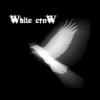I have an application that uses bezier triangle patches to define a hexagonal game board. I am finding that in certain situations the lack of local control provided by bezier surfaces is creating unacceptable visual artifacts. I am now hoping to experiment with triangular NURBS surfaces to see if I can solve some of these issues.
I found a paper that seems rather thorough on the subject here, but I'm have trouble understanding some of the math terminology with my lack of formal math training. Here are a list of things from section 2.2 in that paper that I don't understand.
In the first paragraph of section 2.2 it says "Let T = {(delta?)(i) = [r,s,t] | i = (i0,i1,i2) (thing that looks like an E) Z3+". I assume that r,s,t are the triangle vertices and that the index i is a number combo like 300, 030, 003 etc. If anyone can explain some of these symbols I would be grateful. I don't know what the vertical line means either.
After that there is a knot sequence, which I understand is what is called a knot vector elsewhere, and is just a sequence of increasing numbers like {0,0,1,1,2,2} etc.
Then it says we define a convex hull, and the beta symbol seems to be sort of like the index, I don't know what the 'absolute value' lines mean in this context but that symbol seems to have 3 components that add up to the 'order' of the triangle. I am unsure how the index and this beta symbol should be combined to get the desired number sequence.
Then it defines a multivariate simplex spline M(u | Vibeta). The u is a two component coordinate (u,v), but I don't know what the line means.
Then it defines the basis function with that line again, then a lower case d, with the triangle vertices without the indices but with the beta thingies in parenthesis, 'lined' against the M(u | Vibeta). What does that line mean anyway? The lower case d is also unexplained.
Then we have the unweighted B-spline surface. The Sigma operator is something i always have trouble with, but I interpret this as the sum of every index combo multiplied by the point and the basis function and multiplied again with the sum of all the beta combos multiplied by the point and basis function. However, I do not understand what is meant exactly by Pi,|beta|. Pi would be P300, P030, P003 etc, but I don't know what the beta subscript does to that interpretation.
Finally, there are arbitrary weights that can be set, and once I understand the indexing system, I think I understand this part as a weighted mean of the above.
If anyone can help me make sense of this I would be super grateful.







